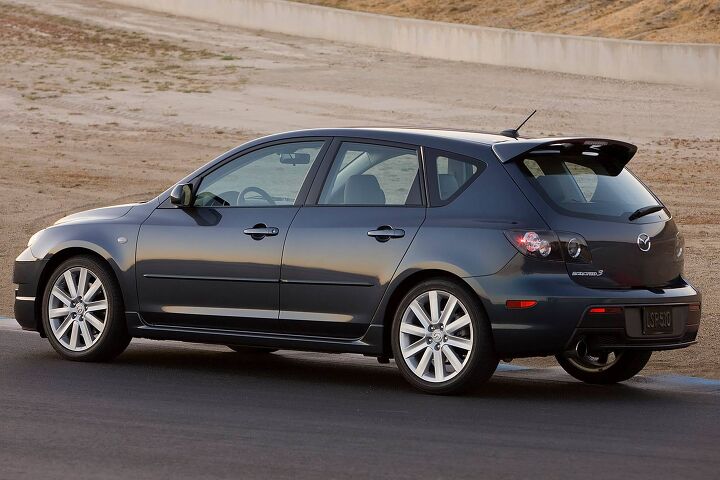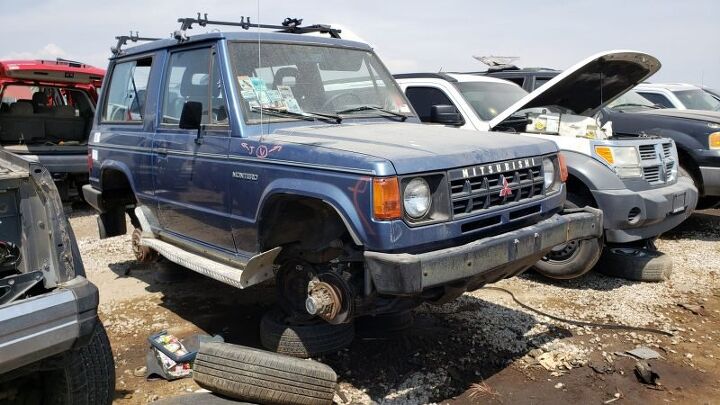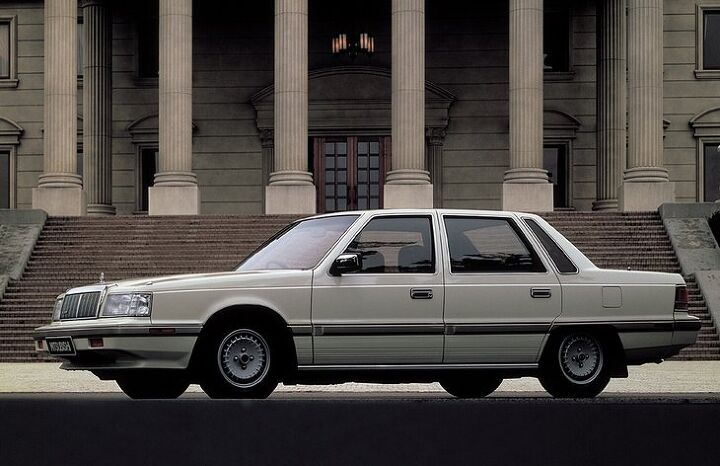#mitsubishi
Opinion: Vehicles That Deserve A Heritage Parts Program
You finally did it, didn’t you? You beautiful disaster, you did it! You spent nearly $30,000 US American dollars on thirty-seven-year-old Toyota Corolla because of a comic book, and you aren’t even mad about it. Hell, you paid a little extra for the “authentic” Fujiwara Tofu Shop decals on the doors. You. Kick. Rear. And now, after you didn’t think it could be possible to feel better about your automotive purchase, I’m going to make you feel better about your automotive purchase – because you can now buy factory-fresh parts for your Corolla AE86, straight from Toyota.
That’s right kids, through its captive motorsport brand, Gazoo Racing, Toyota is reproducing spare parts for the Corolla Levin Sprinter Trueno “AE86” as part of the GR Heritage Parts Project. The project reproduces new original parts that have been discontinued and sells them as genuine parts with a standard new part warranty, “ in order to support customers who wish to continue driving older vehicles that are full of memories and that they truly love.”
All kidding aside, you have to admit that the concept of a Heritage Parts program is great, even if the Initial D AE86 isn’t exactly your cuppa – but it sort of begs the question, what other new-age classics might be worthy of a heritage program? I’m glad you asked!
Buy/Drive/Burn: Hot Japanese Sport Compacts From 2009
On a recent Buy/Drive/Burn that featured some alternative Japanese compacts from 2008, frequent commenter theflyersfan suggested a second look at the same three cars, but in hotter variants. Today’s the day, and it’s 2009.
Buy/Drive/Burn: Alternative Japanese Compacts From 2008
In our last edition of Buy/Drive/Burn, we considered the Mazda Protegé, Mitsubishi Mirage, and Subaru Impreza sedans from 1998. Most of you preferred the Protegé as your Buy of the three. Today we fast forward to the same offerings in 2008, and see if things shake out differently.
Rare Rides: The 1987 Hyundai Stellar, Korean Midsize and Ford Cousin
The Rare Rides series has featured just two Hyundai offerings in past entries, the affordable Pony that Canadians loved, and a Mitsubishi Precis that was a rebadge of the Excel. Today’s larger Rare Ride was sold alongside those two in places outside the United States. Meet Stellar.
Buy/Drive/Burn: Alternative Japanese Compacts From 1998
Our last two Buy/Drive/Burn entries covered the 1998 and 2008 versions of three mainstream Japanese compact sedans: Civic, Corolla, and Sentra. Today we look at the alternative offerings in 1998 from Mazda, Mitsubishi, and Subaru.
Junkyard Find: 1982 Plymouth Sapporo
Junkyard Find: 1989 Mitsubishi Montero
While Mitsubishi sold Montero-badged Pajeros in North America from the 1985 through 2006 model years, the boxy first-generation version (and its Dodge Raider twin— no, not the Mitsubishi Raider) is the one most of us recognize as the true Montero. Since I live in Montero-loving Colorado, I find plenty of these trucks in junkyards and have the privilege of choosing only the nicest ones to share as Junkyard Finds. Here’s a low-mile ’89 that now resides in a car graveyard just north of downtown Denver.
Do You Care? Mitsubishi Outlander PHEV New for 2022
Let’s assume you’re lost and have made your way to a Mitsubishi dealership to make an emergency phone call and use the bathroom. Suddenly, the urge to buy a hybrid SUV overtakes you and you involuntarily find yourself asking a salesperson to direct you to the nearest model. They have several available and walk you over to the Outlanders, where they totally bypass the new models to show you the previous-generation PHEV.
Dealership Markups Are Getting Insane
Car buyers and market observers are used to seeing large dealership markups on models that are tough to get — first editions of popular cars, usually, or models that are produced in small numbers, or both.
It’s no shock to see the Ford Bronco or Chevrolet Corvette marked up by thousands of dollars. Motor Trend reported markups of $30K on Broncos, for example. C8 Corvettes are also being marked up like crazy.
While annoying, it’s somewhat understandable, given how the franchise-dealer system works, as well as how basic capitalism and supply and demand work. You don’t have to like the phenomenon, but the logic behind its existence is sound.
Still, we draw the line at an almost $6K markup of a Mitsubishi Mirage.
Opinion: Maine's Mitsubishi Delica Dilemma is Troubling
The Mitsubishi Delica is one of those quirky right-hand drive, four-wheel-drive vans from Japan. They’re popular among outdoor enthusiasts, fans of ’80s/’90s “rad-era” vehicles, and people looking for a capable camper without having to spend VW Syncro bucks. But in Maine – The Pine Tree State – Delicas are not welcomed, at least by the Bureau of Motor Vehicles. The state has sent letters to owners canceling their registrations.
Thanks to the 25-year import rule, Delicas of the right vintage can be brought into the U.S. with little issue and typically registered with minimal hassle in most states (I’m looking at you, California). However, it came to light recently that Maine was sending letters to Delica owners telling them their registration was canceled, and not because they didn’t do the paperwork correctly.
Junkyard Find: 1983 Chrysler New Yorker
When Lee Iacocca’s K-cars finally hit American showrooms for the 1981 model year, the ax that had seemed poised over Chrysler’s neck for much of the late 1970s seemed to pull back. For model year 1983, a stretched version of the K chassis became the basis of such luxurious machines as the Dodge 600, Plymouth Caravelle, and Chrysler E-Class. Just to confuse everybody, the New Yorker line bifurcated that year, with the New Yorker Fifth Avenue remaining on the same platform as the rear-wheel-drive Dodge Diplomat and the regular New Yorker becoming an E-platform sibling to the 600/E-Class/Caravelle. Here’s one of those first-year New Yorkers, found in very clean condition in a Denver-area self-service yard last week.
Junkyard Find: 2008 Dodge Avenger R/T
When I began traveling the country to work for the 24 Hours of Lemons, back in 2008, I began experiencing the joys of renting the very cheapest cars (that could haul four adults and all their stuff) available at airports in places like Charlotte and Philadelphia. That’s when I discovered the Dodge Avenger and its Journey platform-mate. These fleet-spec Avengers were not good cars, to put it mildly, but we’d speculate— jokingly— on how amazing the factory-hot-rod R/T version must be as we sliced our fingers on door-handle casting flash and listened to the wind shrieking through the sub-par door seals. Here’s one of those mythical Avenger R/Ts, found in a Denver self-service yard.
Rare Rides: The Sporty and Very Rare 1991 Mitsubishi Debonair, by AMG (Part III)
Today marks the final installment in our Mitsubishi Debonair saga, which began a couple of days ago. We talked origins and its eventual demise, and today we’ll cover the little AMG part in the middle.
Rare Rides: The Sporty and Very Rare 1991 Mitsubishi Debonair, by AMG (Part II)
Last time on Rare Rides we introduced Mitsubishi’s Debonair, which began its tenure as Mitsubishi’s flagship luxury sedan in 1963 and remained the same for a very long time. Upon the model’s second generation in 1986, the Debonair made the switch to front-drive and adopted more modern looks in an attempt to appeal beyond very conservative large sedan buyers in Japan.
But the changes still weren’t enough, as we’ll see today.
Rare Rides: The Sporty and Very Rare 1991 Mitsubishi Debonair, by AMG (Part I)
Today’s Rare Ride is the second attempt Mitsubishi made to build its own full-size executive car for the Japanese Domestic Market. Debonair never moved outside its home market, and always played third fiddle to competition from the likes of Toyota Crown and Nissan Gloria (then a Prince model). Today’s example goes slightly further and adds AMG flavor to the front-drive mix.
There’s a lot of information to cover here, and today we talk about the model’s beginnings.






























Recent Comments